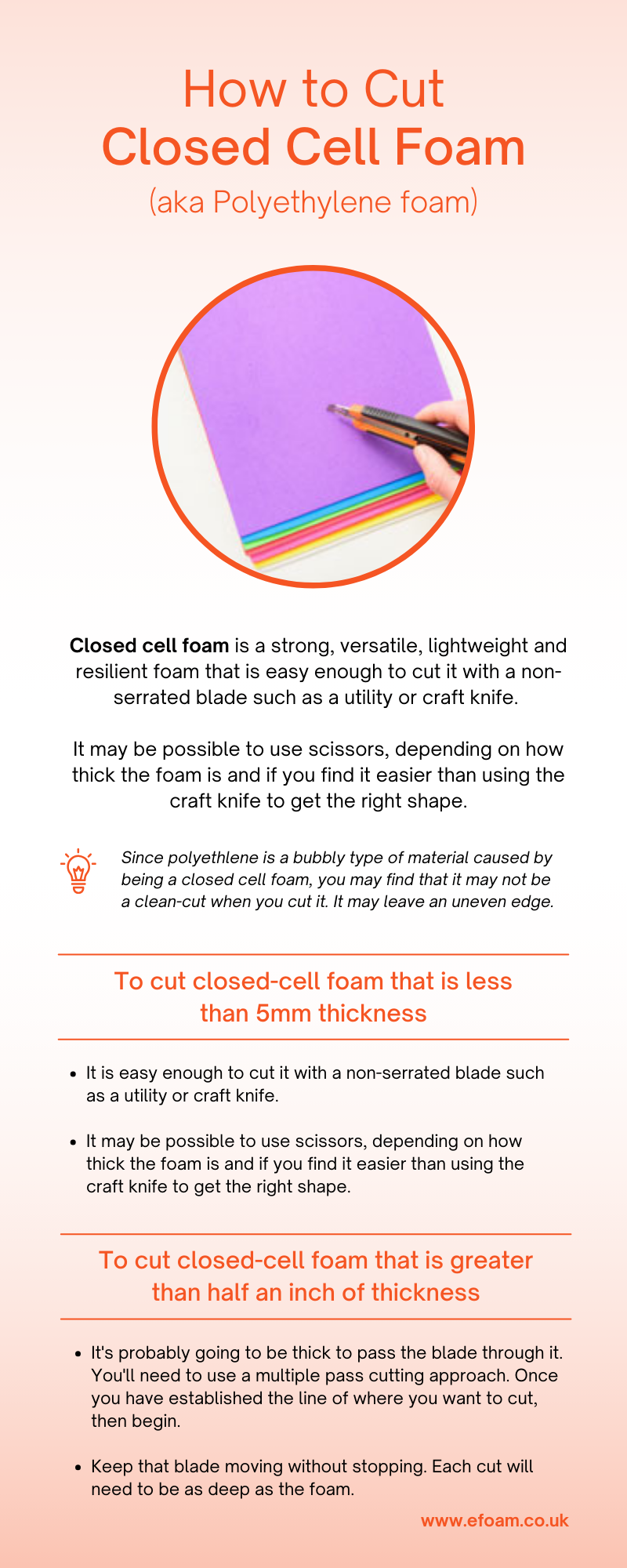
How to cut Closed-Cell foam

Closed-cell foam is a top-rated product, and it's easy to see why. Not only is it durable and protective, but it also comes in a range of shapes, colours and sizes in addition to thicknesses. This versatility has put it up to the top of the charts for many different uses. Fortunately, it's a straightforward material to work with. Whether you're making weather stripping or you want it for packaging, it is most likely perfect for your needs.
Open-cell foam would typically be cut with scissors or even with a hot wire. When it comes to closed-cell foam, it's easy enough to cut it with a non-serrated blade such as a utility or craft knife. It may be possible to use scissors, depending on how thick the foam is and if you find it easier than using the craft knife to get the right shape.
If your polyethylene roll is less than 5mm thick, sharp scissors should do the job for you. However, it's important to note that they can leave jagged edges, so you may need to consider that if this is a home or recreational project, then all very well as it probably won't matter. But if it's for something professional or card making, then a utility or a craft knife will probably be your best choice. To cut your polyethylene, be sure to anchor the foam to avoid creased from the task. Ideally, you'll start cutting from the outside edge and keep going until you've cut all the way across. Don't stop once you've started cutting. Be sure to cut foam on a straight service.

Multiple-Pass Cutting Method for Closed-Cell Foam - If you are required to cut closed-cell foam that is greater than half an inch of thickness, it's probably going to be thick to pass the blade through it. In which case, you'll need to use a multiple pass cutting approach. Once you have established the line of where you want to cut, then begin. Keep that blade moving without stopping. Each cut will need to be as deep as the foam.
As polyethlene is a bubbly type of material caused by being a closed cell foam, you may find that it may not be a clean-cut when you cut it. It may leave an uneven edge.
To get your supply of closed-cell foam, you can find them at eFoam. Whether you need cross-linked polyethyelene or non-cross-linked polyethylene foam, contact our team today to discuss.


